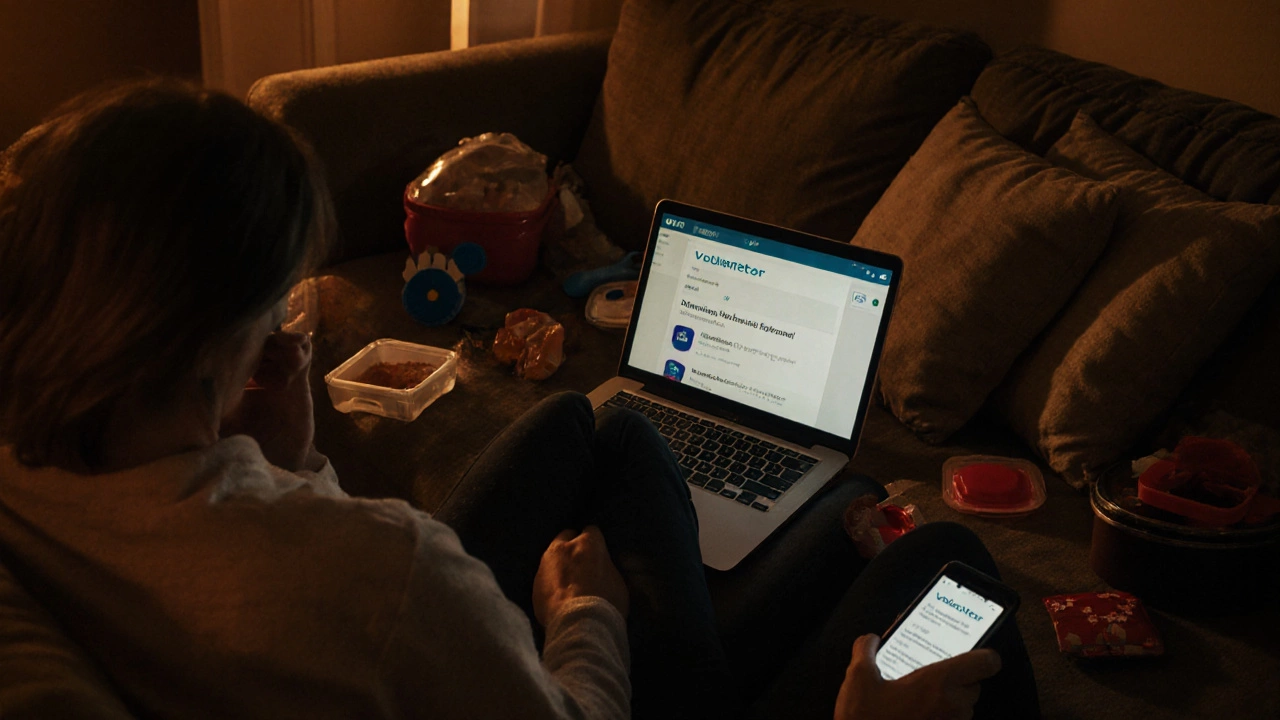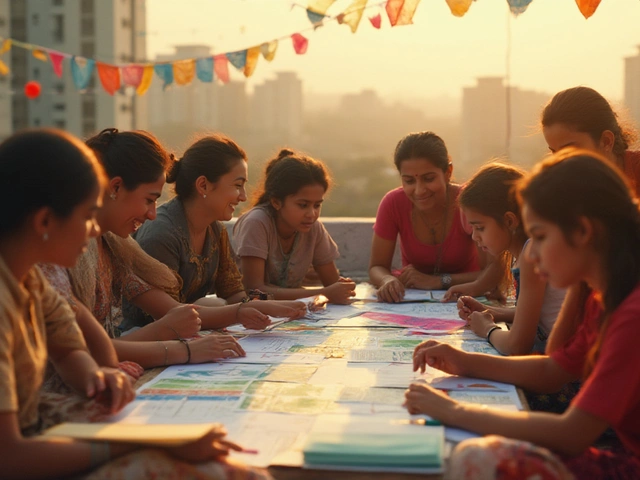Volunteer Impact Estimator
How much time can you commit? Most people underestimate how much they can contribute. Calculate your potential impact with just 15-30 minutes per week.
Your Impact
Based on current community needs (as reported by New Zealand charities)
More than 40% of adults in New Zealand volunteered regularly just ten years ago. Today, that number has dropped to under 25%. It’s not just here-it’s happening everywhere. From food banks to after-school programs, organizations are scrambling to fill slots once filled by neighbors, students, and retirees. But why? Why are people pulling back from helping out when the need is greater than ever?
People are exhausted
It’s not that people don’t care. They do. But they’re worn out. Work hours have stretched. Many are juggling multiple jobs, childcare, aging parents, and mental health struggles. A 2024 survey by the New Zealand Council of Social Service found that 68% of people who used to volunteer said they stopped because they simply didn’t have the energy left after work and family duties. Volunteering used to feel like a choice. Now, for too many, it feels like another demand on an already full plate.
The time cost is too high
Most volunteer roles still ask for a 4-hour weekly commitment. That’s a full evening after work. For someone on a tight budget, that’s two bus fares, a meal, and lost sleep. And if you’re not getting paid, why sacrifice that time? One mother in Christchurch told me she used to tutor kids at the library every Tuesday. She quit when her second child was born and her commute doubled. She still wanted to help-but she couldn’t afford the time, literally or emotionally. Organizations keep asking for the same old time blocks, but modern life doesn’t run on fixed schedules anymore.
Volunteering feels outdated
Think about how most volunteer programs are structured. You sign up, show up at the same place, do the same task, and get a thank-you card. No feedback. No growth. No connection. Younger people, especially Gen Z, expect something more. They want to see impact, not just show up. They want to use their skills-not just fold clothes or hand out sandwiches. A 22-year-old in Wellington who codes for a living doesn’t want to spend Saturday sorting donations. They want to build a website for a homeless shelter. But few organizations know how to offer that kind of flexible, skill-based volunteering.

Trust is broken
Scandals in big charities, misused funds, and poor leadership have left people skeptical. When you hear that a nonprofit spent $500,000 on a retreat while cutting food aid, you stop believing. A 2023 study by the University of Auckland found that 53% of people under 35 say they avoid volunteering because they don’t trust where their time or donations end up. It’s not about being cynical-it’s about being smart. People don’t want to waste their effort on broken systems.
Technology didn’t help-it replaced
It used to be that volunteering was the only way to help. Now? You can donate $5 with a tap. You can sign a petition. You can share a post. You can fund a project online. Digital activism feels easier, faster, and safer. Why spend three hours packing boxes when you can fund ten meals in 30 seconds? That’s not a bad thing-but organizations haven’t adapted. They still treat online giving and volunteering as separate paths. They’re not. People want to help, but they want to do it their way.
Volunteer roles aren’t designed for real life
Most volunteer programs assume you have a 9-to-5, no kids, no car trouble, no sick days. But life doesn’t work like that. A single parent can’t commit to Tuesday evenings. A shift worker can’t show up at 8 a.m. on weekends. Yet, most organizations still run on rigid schedules. There’s almost no option for micro-volunteering-15-minute tasks you can do from your phone. No one asks: “What if you could help for 10 minutes between Zoom calls?”

Young people are being pushed away
Schools used to require community service hours. Now, many students avoid volunteering because it feels like a chore. When help is mandatory, it loses meaning. And when adults treat teens like free labor-making them clean up after events or count donations without real training or respect-they walk away. The next generation isn’t uninterested. They’re turned off by how they’re treated.
It’s not about apathy-it’s about design
The problem isn’t that people have lost their compassion. It’s that the system for volunteering hasn’t changed since the 1990s. We’re asking people to fit into a mold that doesn’t fit their lives anymore. The solution isn’t more posters or more pleas. It’s redesign.
- Offer 15- to 30-minute tasks you can do from home-like translating documents, calling isolated seniors, or reviewing grant applications.
- Let people choose their own skills. A graphic designer shouldn’t be packing boxes. Let them design flyers.
- Give feedback. Show volunteers how their work made a difference. Send a photo. Share a story. Say thank you with specifics.
- Make it flexible. No more rigid shifts. Let people volunteer on their own time, on their own terms.
- Be transparent. Publish where money and time go. Show receipts. Be honest about challenges.
Some groups are already doing this. In Dunedin, a food bank now lets volunteers pick their own task online: pack meals, drive deliveries, or manage their social media. Sign-ups are up 40% in six months. In Auckland, a youth center lets teens lead projects they care about-like starting a podcast for mental health. Engagement soared.
The future of volunteering isn’t bigger-it’s better
We don’t need more volunteers. We need smarter ways to help. The decline isn’t a crisis of character. It’s a crisis of design. If we rebuild volunteering around real lives-not outdated expectations-we’ll see people come back. Not because they’re guilted into it. But because helping finally feels worth their time.
Is volunteerism really declining, or is it just changing form?
It’s both. Formal volunteering-like weekly shifts at a food bank-is dropping. But informal helping is rising: neighbors sharing groceries, parents organizing school supplies, people donating online. The problem isn’t that people stopped helping. It’s that traditional organizations haven’t caught up to how people want to help now.
Do younger people volunteer less than older generations?
Not necessarily. People under 30 volunteer less in traditional roles, but they’re more likely to support causes through digital actions-fundraising, signing petitions, sharing content. They also prefer short-term, skill-based projects. The gap isn’t in willingness-it’s in how organizations match opportunities to their preferences.
Can I still volunteer if I have a busy schedule?
Absolutely. Many groups now offer micro-volunteering: tasks that take 10 to 30 minutes and can be done remotely. Examples include writing letters to isolated seniors, reviewing website content, translating documents, or posting on social media. You don’t need to commit hours-just a few minutes when you can.
Why do some charities seem so unresponsive to volunteers?
Many nonprofits are underfunded and overworked. Their staff are stretched thin, so they can’t respond quickly or offer good training. It’s not personal-it’s systemic. But the tide is turning. More organizations are investing in volunteer management because they realize that happy, respected volunteers stay longer and bring others with them.
What’s the easiest way to start volunteering today?
Look for local groups that offer ‘flexible’ or ‘on-demand’ volunteering. Check platforms like Volunteer Central NZ or local community boards. Start with something that uses your skills-even if it’s small. Send an email to a charity you care about and ask: ‘What’s one thing I can do in 20 minutes this week?’ You’ll be surprised how many say yes.






